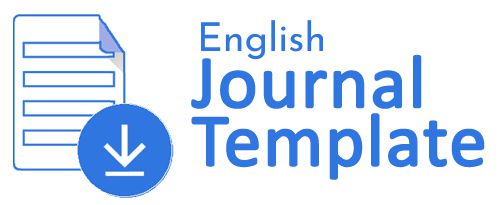Kebijakan Sistem Zonasi Persekolahan Untuk Pemerataan Dan Mutu Pendidikan: Universalisasi Vs Seleksi, Melawan Arus
DOI:
https://doi.org/10.12928/jimp.v4i2.12535Keywords:
Ekuiti, sistem zonasi, sistem orang tua memilih, kesenjangan pendidikanAbstract
Artikel ini membahas dua sistem penempatan siswa di sekolah dan kelas berfocus dampaknya terhadap perbaikan sekolah dan belajar semua anak. Negara berusaha mengendalikan pendidikan melalui sekolah negeri, publik. Pemerintah menetapkan zona-zona pendidikan sebagai suatu sistem dikenal juga sistem neighborhood schooling. Berbagai sebab dan pertimbangan kebijakan orang tua memilih sekolah ditetapkan dan menjadi luas sekitar tahun 80an akhir .Orang tua bebas memilih sekolah dilaksanakan sejak Indonesia merdeka Timbullah fenomena sekolah favorit dan nonfavorit.. Kesenjangan pendidikan mulai dibahas terkait dengan orang tua memilih. Pemerintah mengeluarkan kebijakan zonasi dalam penerimaan peserta didik baru (PPDB). Timbullah pro dan kontra sistem zonasi pendidikan. Dua sistem generic penempatan siswa di sekolah dan kelas itu sarat ideology. Kelompok orang tua memilih sekolah memiliki kaitan dengan pandangan bahwa pendidikan itu suatu komoditas dapat dijualbelikan secara bebas. Praktik selektif mendominasi pendidikan. Dampaknya terjadinya pemisahan etnis dan social di sekolah dan di masyarakat. Ini berbeda dengan pandangan bahwa pendidikan itu “barang social” untuk semua orang dan perbaikan pendidikan dapat diusahakan bersama oleh seluruh masyarakat dengan prinsip ekuiti berdimensi fairness dan inclusi. Perlu dikembangkan institusi yang dapat membebaskan prestasi siswa lepas dari kondisi social ekonomi orang tua dan setiap siswa dapat memiliki keterampilan dasar minimal untuk perbaikan kehidupan mereka dan masyarakatnya. Lazimnya pemerintah pusat dan daerah menetapkan zona-zona sekolah dan mengatur penempatan siswa. Zona pendidikan dan prosedur penempatan anak dapat terus dikaji dampaknya buat perbaikan. Konsep indeks dissimilarity dan indeks exposure dikembangkan untuk memantau dampak implementasi dua sistem penempatan siswa tersebut.
References
Carrie Beaven, Parental choice or school choice: How to benefit from removal zoning? New Zealand Annual Review of Education, 12, 2003, 111-126,
Kaire Ponder, Tuiin Lauri, and Andre Veski, Does school admission by zoning affect educational inequality? A study of family background effects in Estonia, Finland, and Sweden. Doi:1080/00313831.2016.1173094. Scandinavian Journal of Educational Research June 2016.
Kaire Ponder, Tuiin Lauri, and Andre Veski, Does school admission by zoning affect educational inequality? A study of family background effects in Estonia, Finland, and Sweden. Doi:1080/00313831.2016.1173094. Scandinavian Journal of Educational Research June 2016
OECD, Equity, and quality in education: Supporting disadvantaged students and schools, OECD Publishing, 2012.
Peraturan Kepala Dinas Pendidikan, Pemuda dan Olahraga DIY Nomor 0885/PERKA tgl 7 Mei 2019 dan diperbarui dengan nomor 1070//PERKA/2019 Tgl. 10 Juni 2019 Tentang Juknis PPDB Tahun Pelajaran 2019/2020
Simon Burgess, Ellen Greaves, Anna Vignoles and Deborah Wilson, “What parent want: School preference and school choice.” The Economic Journal September 2015
Timothy D, Walker, Teach like Finland: 33 simple strategies for joyful classrooms, New York, London: W. W. Norton & Company, 2017.
Downloads
Published
How to Cite
Issue
Section
License
Copyright (c) 2024 suyata suyata

This work is licensed under a Creative Commons Attribution-ShareAlike 4.0 International License.
This article's copyright is transferred to Universitas Ahmad Dahlan (UAD) if and when the item is accepted for publication. The undersigned hereby transfers any rights in and to the paper including without limitation all copyrights to UAD. The undersigned hereby represents and warrants that the article is original and that he/she is the author of the paper, except for material identified as to its source, with permission notices from the copyright owners where required. The undersigned represents that he/she has the power and authority to make and execute this assignment.
We declare that:
This paper has not been published in the same form elsewhere.
It will not be submitted anywhere else for publication before acceptance/rejection by this Journal.
Copyright permission is obtained for materials published elsewhere and which require this permission for reproduction.
Furthermore, I/We hereby transfer the unlimited rights of publication of the above-mentioned paper in whole to UAD. The copyright transfer covers the exclusive right to reproduce and distribute the article, including reprints, translations, photographic reproductions, microform, electronic form (offline, online), or any other reproductions of similar nature.
The corresponding author signs for and accepts responsibility for releasing this material on behalf of any co-authors. This agreement is to be signed by at least one of the authors who have obtained the co-author(s) assent where applicable. After submission of this agreement signed by the corresponding author, changes of authorship or in the order of the authors listed will not be accepted.
Retained Rights/Terms and Conditions
Authors retain all proprietary rights in any process, procedure, or article of manufacture described in the Work.
Authors may reproduce or authorize others to reproduce the Work or derivative works for the author's personal use or company use, provided that the source and the UAD copyright notice are indicated, the copies are not used in any way that implies UAD endorsement of a product or service of any employer, and the documents themselves are not offered for sale.
Although authors are permitted to re-use all or portions of the Work in other works, this does not include granting third-party requests for reprinting, republishing, or different types of re-use.







